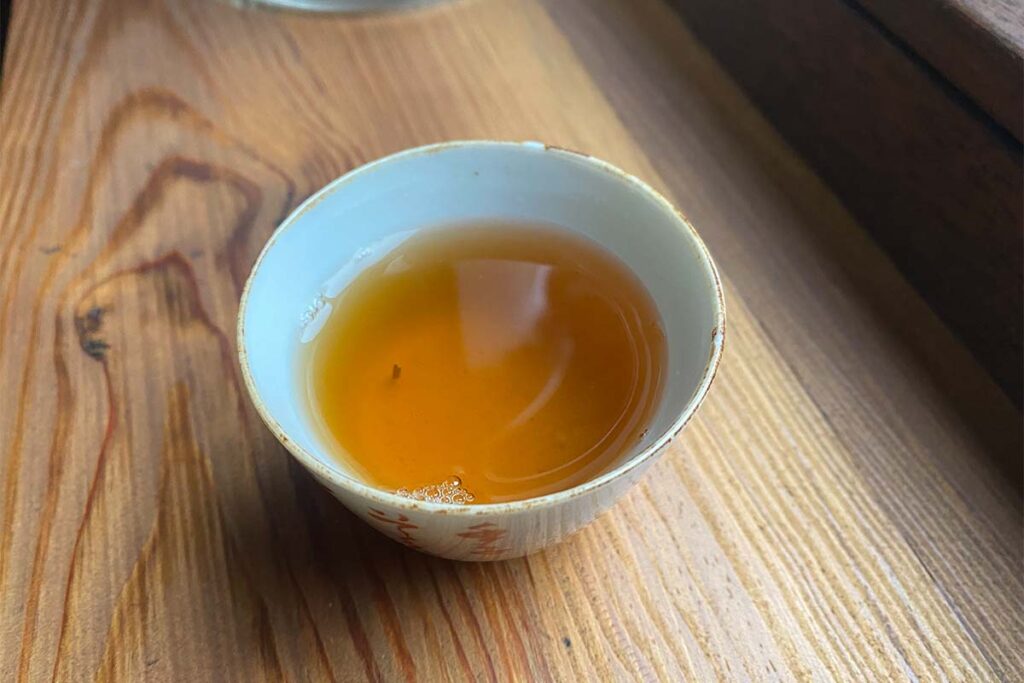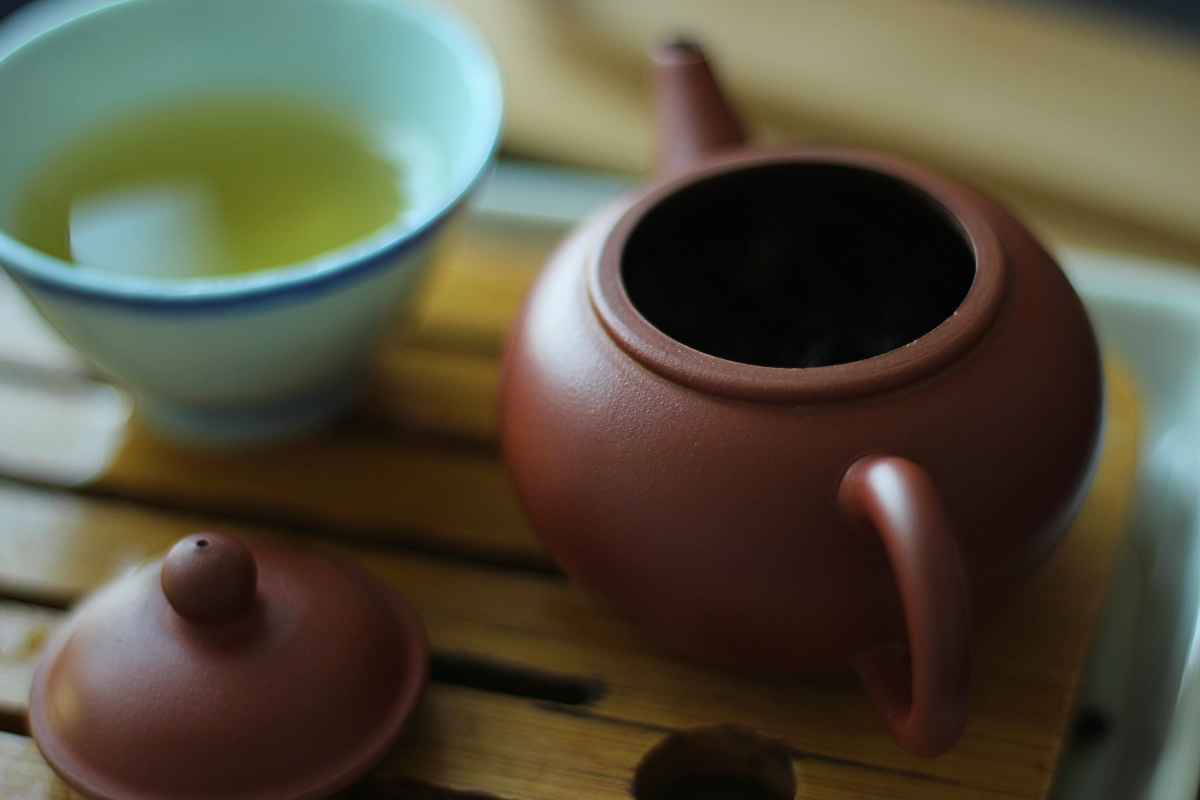I absolutely love the teas I have already tried from Xin An Chu so I wanted to taste another one today. The one I picked for today is the 2012 Jingmai Gushu Dragon Ball.
2012 Jingmai Gushu Dragon Ball
The 2012 Jingmai Gushu comes from one of the six famous tea mountains: Jingmai. The average altitude there is around 1500m above sea level and the environment is relatively unique. There are quite a few mixed forests that consist of young tea trees, gushu trees and wild trees.

Don’t know where to buy tea online? I made a list of over 300 online tea shops and I keep updating it regularly. You can check it over here
This 2012 Jingmai Gushu was hand-rolled into dragon balls in 2012 and was stored in Kunming right after production. This means that it went through relatively dry storage for around 8-9 years.
Tea Tasting
- Water 99°C
- 7.8g for a 120ml dicaoqing teapot
The leaves are rolled by hand into dragon balls. They have a brownish tint and I see some buds when I take a closer look. This dragon ball is bigger than what I usually use in this teapot, so I’ll do shorter infusions. After the rinse, a distinct fruitiness pops up in combination with a slight hint of smoke.

Before starting, I did a double rinse because that is something I always do when brewing dragon balls.
Infusion 1 (15 sec): the color of this one is light orange. I guess the ball hasn’t opened enough… The flavours are really delicate but I feel they are already focused on my throat. There is a sweet undertone, but I can’t really put it into words. It feels nice and active around the throat area.
Infusion 2 (15 sec): I did another infusion of 15 seconds so I don’t overdo it. The color is darker and the flavours feel more intense. Still focused on the back of my throat. An initial fruitiness hits the sides of my tongue and continuous further down the throat. When it reaches my throat area, it has transformed into something fruity with a hint of smoke. The finish and aftertaste have a smoky undertone and feel a tiny bit astringent. It also leaves a cooling sensation in my throat. A couple of minutes after swallowing, my mouth is filled with a bouquet of flowers!
Infusion 3 (18 sec): I feel the dragon ball has opened and is starting to release all of its flavors. The smokiness is more intense right from the start in this one. It decreases towards the finish and changes into a kind of fruitiness. The undertone feels fruity, but the smokiness is dominant. The next infusion will be a bit shorter to see if that decreases the smokiness.
Infusion 4 (15 sec): the smokiness is less intense and it’s fruitier again. I’m still getting a combination of smoke and incense and a slight bitterness pops up towards the end. I guess the infusion time needs to be even shorter (or I need a bigger teapot). It’s also a bit astringent. It’s really interesting to taste and feel how bitter and sweet interact with each other. Bitter at the surface, but a fruity sweetness is lurking somewhere beneath the surface and is right there when the bitter notes start to fade. Five minutes after the infusion, the smokiness has disappeared in my mouth and it’s an explosion of fruits!
Infusion 5 (15 sec): less smoky right from the start. A lot is going on in this infusion. It starts out on a bitter note and gradually changes into something sweet in the finish. The initial impression of the aftertaste is bitter but becomes fruity after a while. I’m also experiencing an astringency, but nothing too intense. It’s still mostly focused on my throat.
Infusion 6 (15 sec): the colour is still dark. This one feels really nice right from the start. It starts out on a fruity note and has a bitter touch. However, a fruitiness dominates this infusion. It’s impressive what effect this tea has on my throat.
Conclusion
I’m really curious to see how this one performs with a lower leaf to water ratio because it felt a bit too intense at some points. I still have one dragon ball left, so I will definitely brew this one again in a bigger pot.
The 2012 Jingmai Gushu is an interesting tea! The combination of bitter, sweet and fruity was pleasant to discover and had a lot to tell me. It was mostly focused on my throat and left a cooling sensation while a flowery aftertaste was noticeable.
If you want to try this 2012 Jingmai Gushu, click here.




